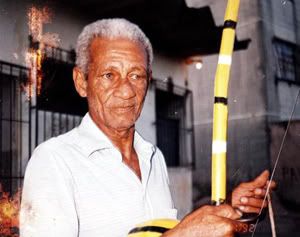Alright bookworms, how many of you have typed 'capoeira' into LINC? Hands up, be honest.
You probably just found a miserable chapter in some enthnomusicology book about how the song structures derive from Arabic poems, right?
Well, who knew that there's better stuff in the e-Resources! (mental note to self: do not sound too enthusiastic in this post). You can find journal submissions by ethnographers J. Lowell Lewis and Greg Downey. Those names may sound familiar if you have read
Ring of Liberation or
Learning Capoeira.
And if you're a freshie, this post will show you how to use the e-Resources, on the off chance that you are an Arts major majoring in Sociology, History or--my deepest condolences--Theatre Studies.
2. In the e-Resources bit in the middle of the page, click the database
Jstor.
3. Log in with your network domain (for most of you, NUSSTU-student), userid and password.
4. Agree to abide by the copyright policy. This will bring you to the
Jstor hompage via proxy through NUS Libraries.
5. Type 'capoeira' into the search box and hit enter. Brace yourself!
6. You can find journal entries such as:
[What is a journal, you ask? Well, it's sort of like an FHM magazine for professors. It has less pictures and a lower readership. Ironically, a lot more reading is involved]
J. Lowell Lewis. Sex and Violence in Brazil: "carnaval, capoeira", and the Problem of Everyday Life. American Ethnologist, Vol. 26, No. 3 (Aug., 1999), pp. 539-557
Wow, not just sexy violence or even violent sex, but sex
and violence! It's like the PhD.'s equivalent of a hollywood blockbuster!
'American Ethnologist' is the name of the magazine. Yes, it goes up to 600+ pages (I told you more reading was involved). No, there are no centrefold pullouts. 'Sex and Violence in Brazil carnaval, capoeira", and the Problem of Everyday Life' is the title of the article Lewis (probably Dr Lewis) submits to American Ethnologist to publish to justify the letters preceding his name, and also so that his university doesn't fire him.
Greg Downey.
Listening to Capoeira: Phenomenology, Embodiment, and the Materiality of Music. Ethnomusicology, Vol. 46, No. 3 (Autumn, 2002), pp. 487-509
Maya Talmon Chvaicer. The Criminalization of Capoeira in Nineteenth-Century Brazil. The Hispanic American Historical Review, Vol. 82, No. 3, Special Issue: Slavery and Race in Latin America (Aug., 2002), pp. 525-547
Thomas H. Holloway.
"A Healthy Terror": Police Repression of Capoeiras in Nineteenth-Century Rio de Janeiro. The Hispanic American Historical Review, Vol. 69, No. 4 (Nov., 1989), pp. 637-676
Richard Graham. Technology and Culture Change: The Development of the "Berimbau" in Colonial Brazil. Latin American Music Review / Revista de Música Latinoamericana, Vol. 12, No. 1 (Spring - Summer, 1991), pp. 1-20
The last one is a review. There are a lot of these. It's a professor writing about another person's work. You see, if you can't think of anything to write, you can go to an e-resource, download something, and write about that. This is also how professors entertain themselves (instead of staring at centrefolds). As you can see, O'connor is reviewing a work by Mestre Cobra Mansa--that slick angoleiro you saw in the videos.
Kathleen O'Connor. Review: [untitled]: Reviewed work(s): Capoeira Angola from Salvador, Brazil. Grupo de Capoeira Angola Pelourinho by Mestre Cobra Mansa; Heidi Rauch.
Ethnomusicology, Vol. 41, No. 2, Special Issue: Issues in Ethnomusicology (Spring - Summer, 1997), pp. 319-32
Strangely, if you type 'capoeira angola' without the quotation marks, you get another set of capoeira articles. Beats me.
Okay, you say. There's lots of stuff to read, but how will this improve my game, pôrra? Well, that's a very good question. (steeples fingers, looks condescendingly over glasses) The concept of 'game' was first tackled by the philosopher Ludwig Wittgenstein. He argued that any element of game, like play, competition, fun, rules, failed to adequately define what games are. There is always a game which is an exception. Ultimately, he argues that what we call 'game' must be understood as a series of 'family resemblances' where no single trait runs through. (leans back in highbacked leather-upholstered armchair) ... which brings us to the very interesting field of Ludology....
Stay awake!
-EW




